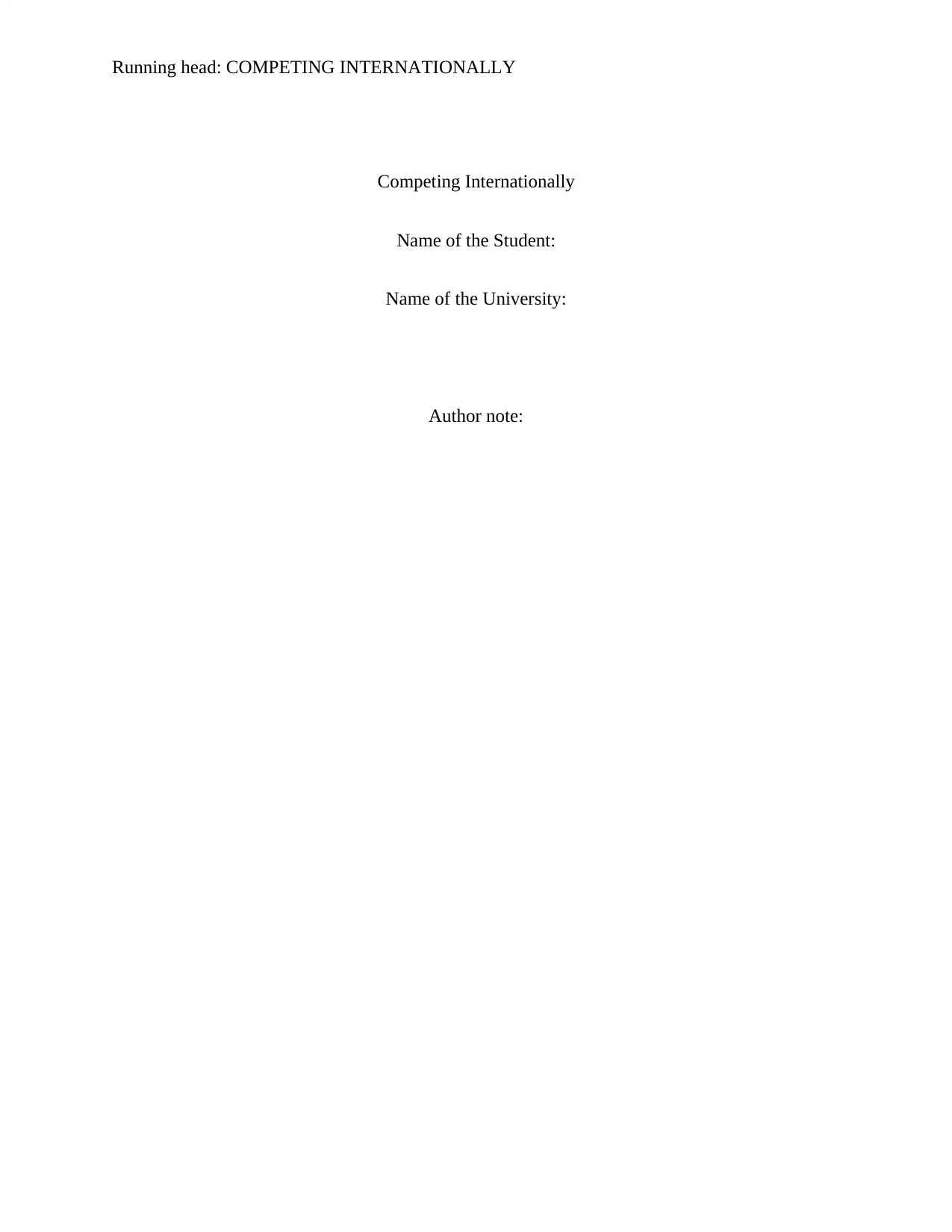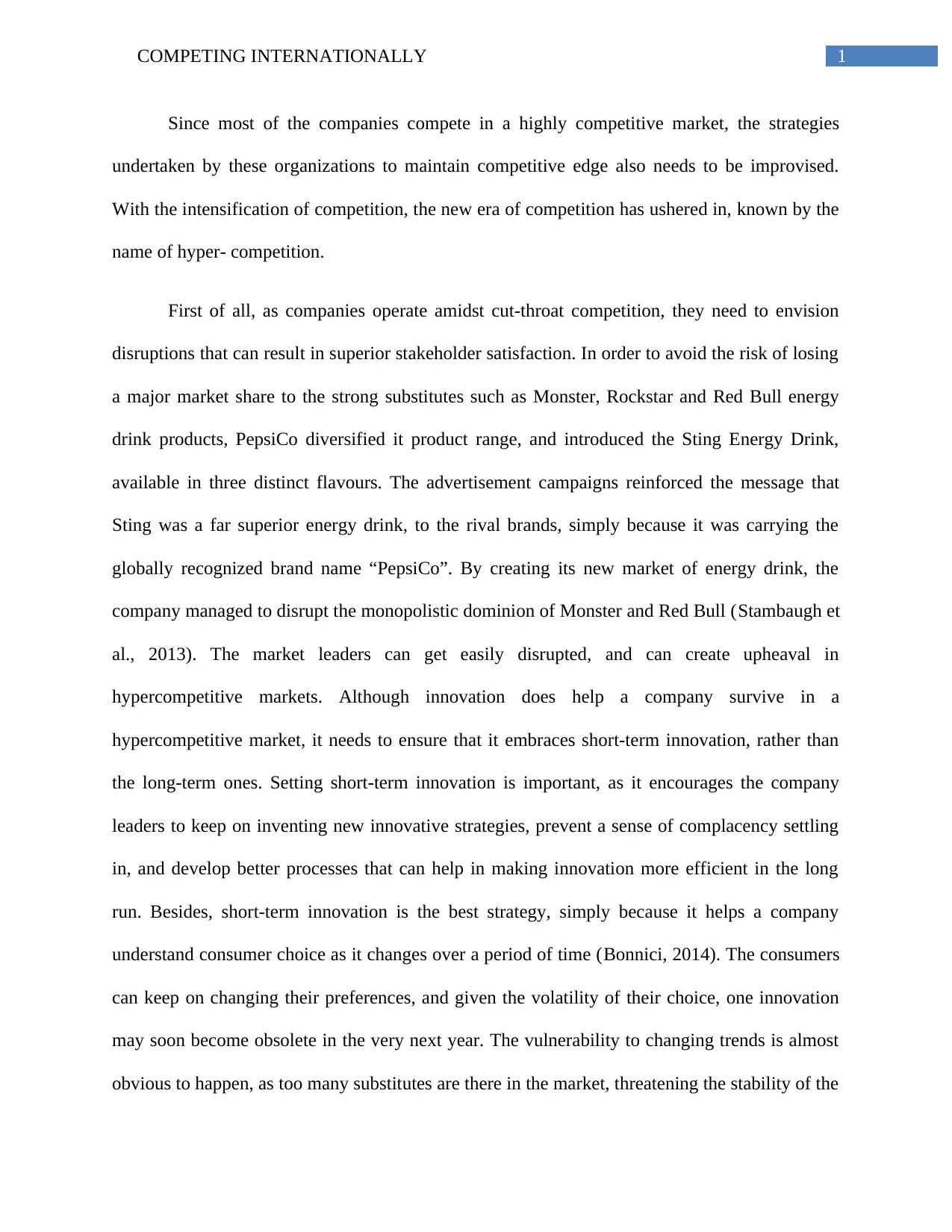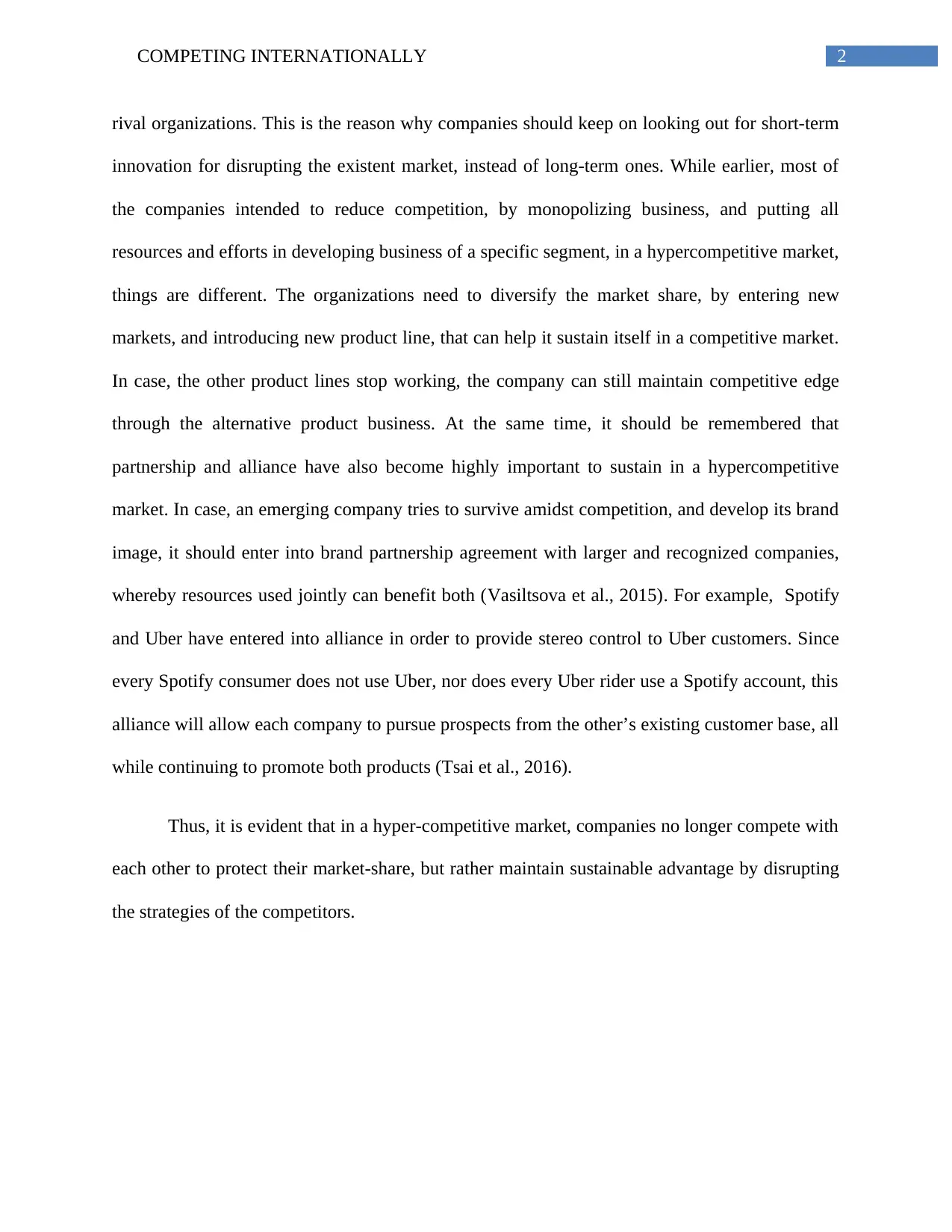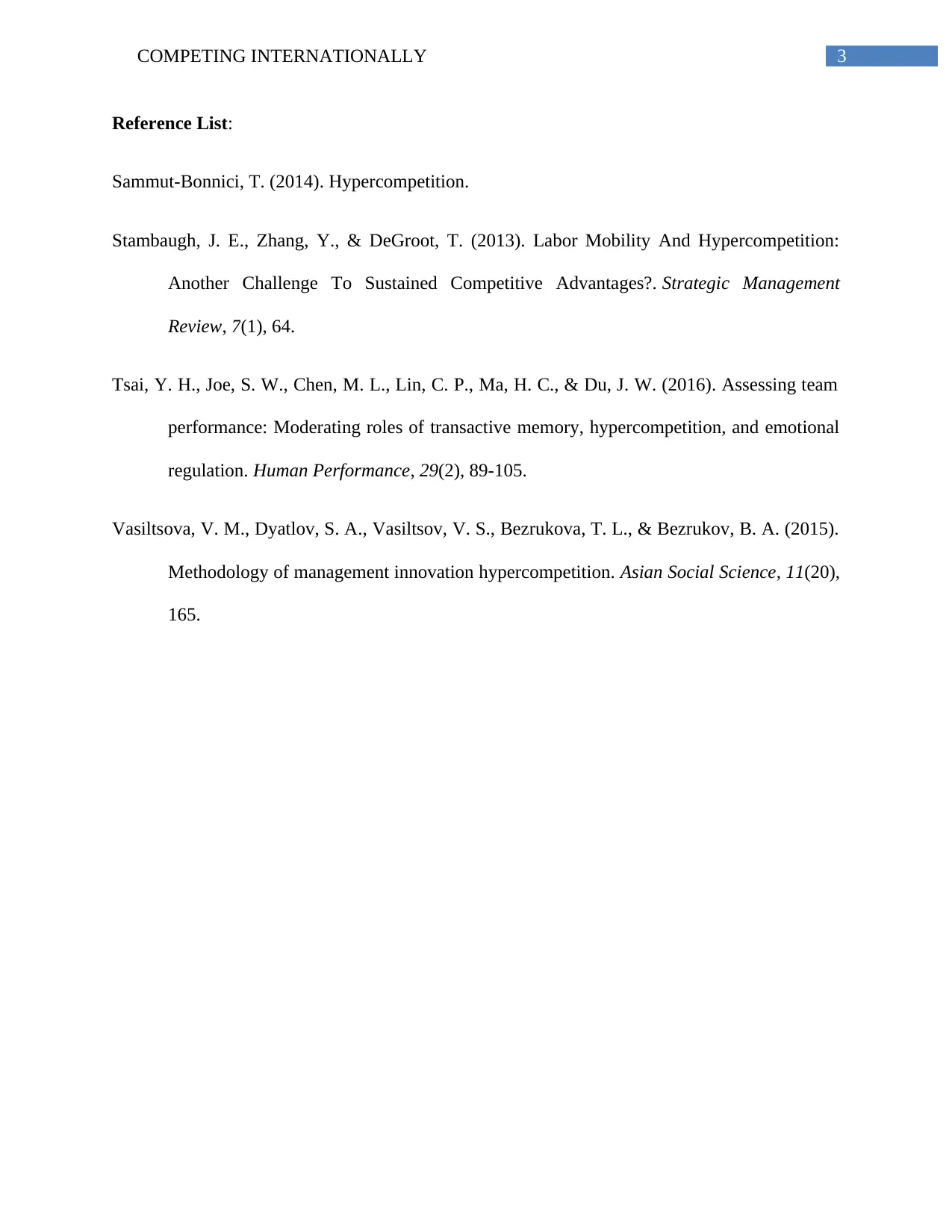Analyzing Competitive Strategies for International Business Success
VerifiedAdded on 2020/03/23
|4
|846
|51
Report
AI Summary
This report delves into the strategies companies employ to maintain a competitive edge in the increasingly hypercompetitive international market. It highlights the importance of anticipating disruptions to satisfy stakeholders, using PepsiCo's introduction of Sting Energy Drink as an example of market disruption. The report emphasizes the significance of short-term innovation to adapt to changing consumer preferences and maintain a proactive approach. It also discusses the shift from monopolization to market diversification, and the importance of strategic partnerships, illustrated by the Spotify and Uber alliance, to leverage resources and expand customer bases. The report concludes that in a hypercompetitive landscape, businesses must not only protect market share, but also proactively disrupt competitors' strategies for sustainable advantage. The report also includes references to relevant academic literature supporting the points discussed.
1 out of 4










![[object Object]](/_next/static/media/star-bottom.7253800d.svg)